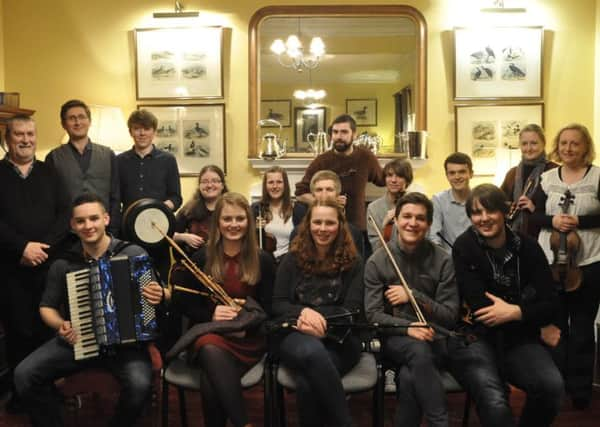Jim Gilchrist: Scotland's thriving folk scene gets better by degrees every year


Speaking from her Outer-Hebridean base of Benbecula, Stevenson is talking about the flourishing music courses which Lews Castle College, in conjunction with the University of the Highlands and Islands, has been delivering from the Uists since 2000, and of which she has been programme leader since 2006. An impressive roster of well-known traditional musicians have emerged from these courses, as powerfully demonstrated by a compilation album, Nead nan Ceòladair – “The Musicians’ Nest”, launched earlier this year at a spirited concert at Celtic Connections.
The album features a potent mix of the current students, tutors and alumni from this musical hotbed, including Breabach piper and flautist James Duncan MacKenzie, Manx fiddler Tom Callister, Seonaidh Macintyre with Trail West and Elephant Sessions fiddler Euan Smilie.
Advertisement
Hide AdThe degree course for the BA (Hons) Applied Music is a unique package of “blended learning”, combining distance learning with video-conferencing, online work and face-to-face tutoring. The course currently boasts 70 students from across Scotland, with some in England while, over the years others have come from Austria, Switzerland, Canada and the USA.
The ethos of the Uist courses is to nurture independence, professional engagement and collaboration, while also engaging beyond the campus with communities in the Uists or elsewhere. Students, for instance, are currently preparing to spend the week after next at Stornoway’s An Lanntair arts centre, with a showcase performance scheduled for 3 May.
Just as students at the Benbecula campus (the courses are accessible at other UHI campuses such as Perth, Alness and Fort William) immerse themselves in both the campus and local communities, their tutors may be local as well as visiting – staff over the years have included piper Ian MacDonald, pianist Roisin King, Stevenson’s husband, Simon Bradley, also a fiddle player, and bouzouki specialist Will Lamb, who developed the early courses.
Wide-ranging associated activities have delivered music workshops to some 4,000 school pupils via the award-winning Soundstorm Music Education Agency, and recording songs for the Òrain na Cloinne Bige website for use in early-stage Gaelic education.
The new album was co-funded by, among others, the Stòras Uibhist Community Development fund, which also funded eight films which are as much alluring showcases for Uist as for the courses, which can only swell the ranks nurtured within the musicians’ nest.
Back in the late 1950s, as collectors were starting to realise the vast, untapped riches of song and music to be found across Scotland, the idea of degree courses in traditional music would have seemed as fantastical as the concept of the internet. Last August, I wrote about the newly unveiled canvas, Scotland’s Voices, by Alexander Moffat. A companion piece to his famous Poet’s Pub which featured figures of the Scottish literary renaissance, Scotland’s Voices is a composite of significant tradition-bearing singers and musicians gathered round the poet and folk song collector Hamish Henderson.
Advertisement
Hide AdRashly commenting that the new painting warranted a complimentary album, I was taken up on my suggestion by Ian Green of the Greentrax label and the result has just been released. Scotland’s Voices, the album, features largely archive recordings by the tradition-bearers portrayed in Moffat’s painting, such as late greats Jeannie Robertson and Willie Scott, as well as those still very much with us – Dolina MacLennan, Aly Bain and Allan MacDonald. Sandy Moffat kindly allowed his painting to appear on the cover, I wrote sleeve notes, and the result, I’d like to think, is a rich if necessarily limited sound window into that glowing canvas and the voices who helped kick-start a folk revival that today sees its songs and skills transmitted via internet and video-conferencing as well as through session and ceilidh.
For further information, visit www.lews.uhi.ac.uk/about-us/find-us/benbecula-campus and www.greentrax.com